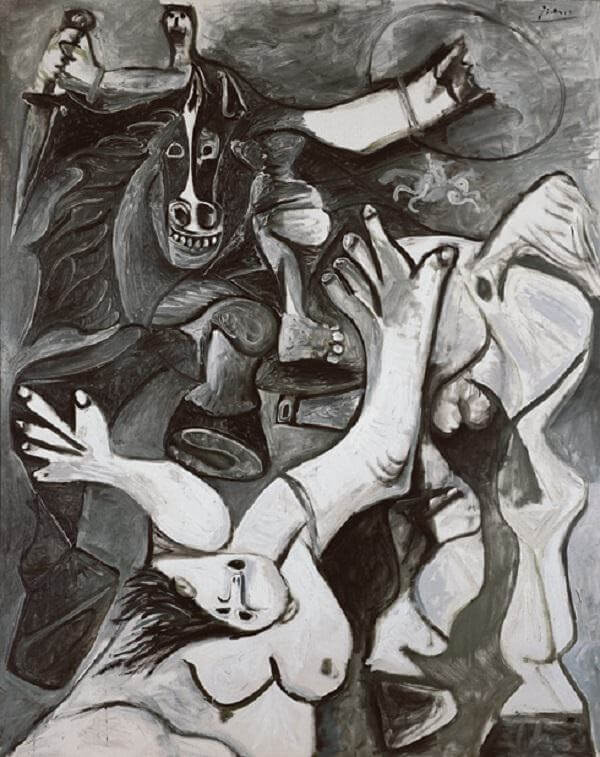The Rape of the Sabines, 1962 by Pablo Picasso

Towards the end of 1962 Picasso turned his attention once more to the atrocities of war. The Rope of the SabinU draws upon two traditional sources - Jacques-Louis David's (1748-1825) painting of the same title. and Poussin's The Massacre of Innocents.
Once again, Picasso reduced his palette to monochrome, as he; had done earlier in both Guernica and The Charnel House, and presented a scene of violence, in which a naked woman' attempts to flee in horror from a rider, sword in hand, bearing down upon her. Yet it is the horse that carries most threat; This aggressive stallion, its teeth bared menacingly and its genitalia explicitly highlighted, exudes sexual threat The catalyst for this vision of horror was the Cuban Missile Crisis that erupted in November 1962, bringing the world as close as it has ever been to nuclear war.
In Picasso's work, the minuscule rider seems physically incapable of controlling his mount much as - it must have seemed at the time - the march towards nuclear Armageddon seemed to be on an unstoppable course.
















